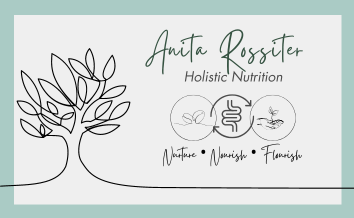|
Post autism discovery I have gone through the "if only" phase of reflection. If only I had been diagnosed younger..... As a woman in her 40's, the lens of retrospect has identified so many pivotal moments where knowing who I was and how my brain worked could have led to many different outcomes (this is not a violin request, merely an observation). I know many other women who have had the same thoughts as autistic women are now being described as the "lost generation" as we come to learn so much more about neurodivergence.
But I can quickly stop these ponderings because just looking historically, the earliest I could have been diagnosed would have been in 1994; back in my last year of secondary school. This is when Asperger's Disorder was first recognised as a pervasive developmental disorder in the Diagnostic Statistic Manual. By this stage I was well into mastering the art of observation and learning human behaviour and communication conventions. It became so clear that to communicate and appease, you simply become the person in front of you. What could not be to like about you then?! Throw in an abundance of niceties and impeccable manners and there you have it..... acceptance! But I digress.... So easily we could believe we are in an epidemic of autism diagnosis. If we were only to look at the statistics between 1980 and 2014 it would appear that way with an increase in prevalance from 0.5 per 1000 children under 8 through to 16.8 per 1000 children under 8 in 2014 in the USA according to CDC 2014 report (notice we aren't yet looking at adult diagnoses so expect a full blown escalation in the near future). I am also of the great belief that we have seen a massive increase in so many additional environmental stressors which potentially trigger co-existing presentations which play the role in amplifying autistic characteristics over the past 30 years. It doesn't take a rocket scientist to look around to see the additional sensory load alone in our day today. Throw that into a brain with a decreased stress threshold and off we go. Again another digression for another day! The history of how autism has been defined alone is really interesting and if we are to really understand and accept neurodiversity, it is important to understand the diagnostics and definitions. History of the diagnosis of autism Lets dive in. So grab a cuppa and get comfy! DSM-III 1980-1994 Despite the term autism first being introduced by Leo Kanner in 1943 and Asperger's disorder research first published in 1944 by Hans Asperger, it wasn't until 1980 that infantile autism was first recognised as a pervasive developmental disorder in the DSM-III (Diagnostic Statistic Manual developed by the American Psychiatric Association). Previous to this between 1952 and 1980, there was no category for autism but it was thought to be a psychiatric disorder rather than behavioural condition categorised with childhood schizophrenia. To be dianosed with infantile autism, you had to be a child, have had onset before 30 months of age, had deficits in language, shown bizarre behaviours and had a serious lack of social response. Under these criteria, more severely impaired autistic children were diagnosed. Prevalence rates at this time were 0.5 per 1000 children (CDC). DSM-IV (and DSM IV-TR) 1994-2013 In 1994 the DSM-IV the term "Pervasive Developmental Disorder" was used to describe a spectrum of autism and related disorders including autistic disorder, PDD-NOS, Aspergers disorder, Rett's syndrome and childhood disintegrative disorder. This was the first time that those with higher functionality (and I use this term soooo loosely as I am not a fan) were identified. The DSM-IV has a triad of diagnostic criteria or three domains which were: * impaired social reciprocity * impaired language/communication and * restricted or repetitive patterns of interests/activities. To meet the criteria, the individual must show at least 2 social, at least 1 communicative and at least 1 restricted behaviour with onset in at least one area before the age of 3 years. DSM-5 2013-present 2013 saw the release of the revised DSM-5. Probably the most significant change was that it combined all of the separate disorders of the DSM-IV into one single condition called Autism Spectrum Disorder (ASD). The diagnostic criteria changed from the triad to a dyad: * Social Communication Deficits * Restricted Interests and Repetitive Behaviours (RRBs). The new criteria acknowledged that although characteristics are present from early life, they may not become fully evident until the time in life when there are demands (in particular social demands) that exceed their coping capacities (think school year, teens and school refusal, self-harm, university life, motherhood, full-time employment etc etc etc). There are severity descriptors applied to each domains which recognise the level of support required. The level can be different for social communication and RRBs. The new criteria also recognise that these levels can change over time and in different contexts. Other changes include the ability to also officially diagnose a co-occurring condition (such as anxiety disorder, ADD/ADHD) in addition to ASD. WHERE ARE WE NOW? Certainly our current thinking has moved a long way from the early diagnoses of "childhood schizophrenia" or "infantile autism". We know that it is life-long developmental neurobiological presentation. We know that stand alone autism presents uniquely in every individual but add in some co-occurring presentations which are extra special additions that may exacerbate or mask autistic characteristics and we can really appreciate the full 3D spectral diversity. Childhood presentation is different to teenage presentation which is different to adult presentation in each individual. Each day is different. Each audience will see it differently. So by the time you meet a 30's or 40's-something adult with ASD, it can be almost forgivable for invalidating the autistic claim because you are most likely meeting a master chameleon who has devoted their entire life to studying how to be neurotypical while the whole time feeling like they have been dropped in from another planet and continually falling apart the moment the door shuts!
0 Comments
Leave a Reply. |
Anita RossiterHolistic Nutritionist. Categories
All
Archives
April 2019
|





 RSS Feed
RSS Feed